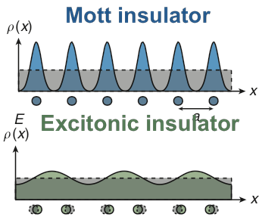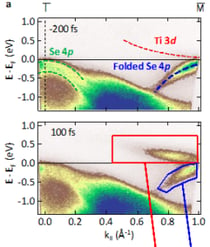Time and angle-resolved photoelectron spectroscopy (Tr-ARPES) can map the full band structure of a material, including both the occupied and the unoccupied bands. This approach makes it possible to uncover important new information about the static and dynamic properties of materials.
After exciting a material with a femtosecond laser, time-resolved ARPES can map out the normally-empty conduction band to accurately measure the bandgap, which provides fundamental information about the electrical properties of the sample. In addition, by tuning the laser excitation fluence, new states and phases in both magnetic and quasi-2D charge density wave (CDW) materials can be uncovered.
ARPES is arguably the most powerful method for probing the electronic structure of solids to gain insight into a number of properties such as conductivity, magnetoresistance, superconductivity and magnetism laying the framework for applications ranging from solar cells, photocathodes and catalysis to spintronics, topological materials and quantum technologies.
Interested to learn more about ARPES? Watch this webinar below by KMLabs co-founders Henry Kapteyn and Margaret Murnane:
High harmonic EUV sources are ideal for ARPES for several reasons –
- Their photon energy and momentum can probe band-specific dynamics across the entire Brillouin zone
- They can be implemented with very high repetition rates (1-100kHz) to eliminate space charge distortion, and also enable spin-resolved ARPES
- They are perfectly synchronized to the driving laser, with the ability to capture the fastest sub-femtosecond charge and spin dynamics
- EUV high harmonics can experimentally access quasiparticle lifetimes, electron mean free paths, electron-electron scattering and dynamical screening, all of which represent science grand challenges
- Their polarization state is well defined, and can be adjusted from linear (s & p) to circular polarization to harness photoemission selection rules
- Sequences of attosecond pulses are superior to isolated attosecond pulses for measuring band-specific electron dynamics with 100meV energy resolution and 20 attosecond time resolution


Example References:
Science 353, 62 (2016)
Science 353, 28 (2016)
Science Advances, in press (2017)
Nature 471, 490 (2011)
Nat. Comm 3, 1069 (2012)
PRL 112 , 207001 (2014)
PRB 92, 041407 (2015)
Nature Comm. 7, 12902 (2016)



